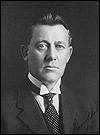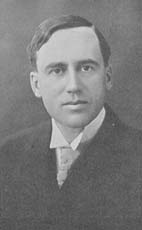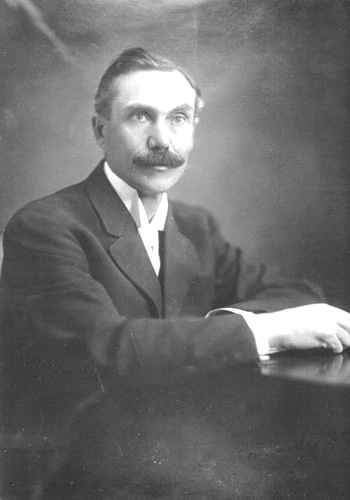|
Last Mountain (provincial Electoral District)
Last Mountain is a former provincial electoral district for the Legislative Assembly of the province of Saskatchewan, Canada. Centered on the town of Strasbourg, it included the northern half of Last Mountain Lake. This constituency was created for the 2nd Saskatchewan general election in 1908. It was dissolved and combined with the Touchwood district (as Last Mountain-Touchwood) before the 18th Saskatchewan general election in 1975. A federal electoral district in the same area existed from 1914 to 1935. Members of the Legislative Assembly Election results , - , style="width: 130px", Provincial Rights , Thomas Arnold Anderson , align="right", 1,204 , align="right", 57.12% , align="right", – , - bgcolor="white" !align="left" colspan=3, Total !align="right", 2,108 !align="right", 100.00% !align="right", , - , Conservative , Thomas Arnold Anderson , align="right", 793 , align="right", 35.37% , align="right", -21.75 , - bgcolor="white" !align="left" colspan=3, Tot ... [...More Info...] [...Related Items...] OR: [Wikipedia] [Google] [Baidu] |
List Of Saskatchewan Provincial Electoral Districts
Current electoral districts * Athabasca (1934) * Arm River (2016) * Batoche (2003) * Biggar-Sask Valley (2016) * Cannington (1995) * Canora-Pelly (1995) * Carrot River Valley (1995) * Cumberland (1975) * Cut Knife-Turtleford (2003) * Cypress Hills (1995) * Estevan (1975) * Humboldt-Watrous (2016) * Indian Head-Milestone (1995) * Kelvington-Wadena (1975) * Kindersley (1975) * Last Mountain-Touchwood (1975) * Lloydminster (1995) * Lumsden-Morse (2016) * Martensville-Warman (2016) * Meadow Lake (1934) * Melfort (2003) * Melville-Saltcoats (2003) * Moose Jaw North (1995) * Moose Jaw Wakamow (1991) * Moosomin (1905) * Prince Albert Carlton (1991) * Prince Albert Northcote (1991) * Regina Coronation Park (1995) * Regina Douglas Park (2003) * Regina Elphinstone-Centre (2003) * Regina Gardiner Park (2016) * Regina Lakeview (1995) * Regina Northeast (1995) * Regina Pasqua (2016) * Regina Rochdale (2016) * Regina Rosemont (2003) * Regina University (2016) * Reg ... [...More Info...] [...Related Items...] OR: [Wikipedia] [Google] [Baidu] |
Saskatchewan New Democratic Party
The Saskatchewan New Democratic Party (NDP) is a social-democratic political party in the Canadian province of Saskatchewan. It currently forms the official opposition, but has been a dominant force in Saskatchewan politics since the 1940s. The party is the successor to the Saskatchewan section of the Co-operative Commonwealth Federation (CCF), and is affiliated with the federal New Democratic Party. History Precursors The origins of the party began as early as 1902. In that year a group of farmers created the Territorial Grain Growers' Association. The objective of this group was to lobby for farmer's rights with the grain trade and the railways. The name was changed to the Saskatchewan Grain Growers' Association (SGGA) when Saskatchewan became a province in 1905. In 1921 a left-wing splinter group left the SGGA to form the ''Farmer's Union''. However, the two groups reconciled in 1926 and reformed as the United Farmers of Canada (Saskatchewan Section) (UFC). The first l ... [...More Info...] [...Related Items...] OR: [Wikipedia] [Google] [Baidu] |
1938 Saskatchewan General Election
The 1938 Saskatchewan general election was held on June 8, 1938, to elect members of the Legislative Assembly of Saskatchewan. The Liberal Party was returned to power under its new leader, William John Patterson, but it lost twelve of the seats it had held in the previous legislature. The Liberals faced several new forces in this election. The Co-operative Commonwealth Federation, a democratic socialist party led by George Hara Williams, became the official opposition winning over 18% of the vote and ten seats in its first election. The party previously had five seats after the Farmer-Labour Group became the Saskatchewan CCF following the previous election. The Social Credit Party of Saskatchewan, which promoted the social credit theories of monetary reform, rode a wave of popularity from the 1935 electoral success of its Alberta counterpart and collected almost 16% of the votes, but won only two seats. Six "Unity" candidates also ran in an attempt to create a popular front ... [...More Info...] [...Related Items...] OR: [Wikipedia] [Google] [Baidu] |
1934 Saskatchewan General Election
The 1934 Saskatchewan general election was held on June 19, 1934, to elect members of the Legislative Assembly of Saskatchewan. The Liberal Party of Saskatchewan, Liberal Party of former List of premiers of Saskatchewan, Premier James Garfield Gardiner, James Gardiner was returned to power with a large majority – 50 of the 55 seats in the legislature – after the four year Conservative minority government interlude. After forming a coalition government to oust the Liberals from power after the 1929 Saskatchewan general election, 1929 election, James Thomas Milton Anderson, James T.M. Anderson's Progressive Conservative Party of Saskatchewan, Conservative government had tried to use anti-Roman Catholic Archdiocese of Regina, Catholic and anti-Fransaskois, French Canadian feeling in the province to win support. The Conservatives also had the support of the Ku Klux Klan in Canada, Ku Klux Klan, which was a significant force in the province at the time.Weedmark, Kevin"When the KKK ... [...More Info...] [...Related Items...] OR: [Wikipedia] [Google] [Baidu] |
1929 Saskatchewan General Election
The 1929 Saskatchewan general election was held on June 6, 1929 to elect members of the Legislative Assembly of Saskatchewan. As a result of corruption scandals, the Liberal Party of Premier James Gardiner lost a significant share of its popular vote, but more important, lost twenty-two of the seats it had won in the 1925 election. While the Liberals held the largest number of seats in the legislature, they had only a minority. Gardiner tried to continue as a minority government, but was quickly defeated in a Motion of No Confidence, and resigned as premier. The Conservative Party of James T.M. Anderson increased its representation in the legislature from three to twenty four seats. Following Gardiner's resignation, Anderson was able to form a coalition government with the support of the Progressive Party and some independents. The Progressives had lost a large part of the popular vote it had won in 1925, but managed to retain five of the six seats it had won previously. Resu ... [...More Info...] [...Related Items...] OR: [Wikipedia] [Google] [Baidu] |
Progressive Conservative Party Of Saskatchewan
The Progressive Conservative Party of Saskatchewan is a conservative political party in the Canadian province of Saskatchewan. Prior to 1942, it was known as the Conservative Party of Saskatchewan. Members are commonly known as Tories. History Early years, 1905–1934 It was the Saskatchewan successor to the eastern half of the North-West Territories Conservatives. The Conservative Party of Saskatchewan's first leader, Frederick W. A. G. Haultain, was so upset at sections of the federal legislation that created the province relating to immigration, education, and natural resources that he renamed the party the Provincial Rights Party for the 1905 and 1908 general elections. The party reverted to the Conservative name for the 1912 election, after which Haultain left politics to become Chief Justice of Saskatchewan. Its share of the popular vote declined from 32% to 5% between 1905 and 1921. The Conservative Party's fortunes began to improve when James T.M. Anderson became lea ... [...More Info...] [...Related Items...] OR: [Wikipedia] [Google] [Baidu] |
1925 Saskatchewan General Election
The 1925 Saskatchewan general election was held on June 2, 1925 to elect members of the Legislative Assembly of Saskatchewan. The Liberal Party of Saskatchewan – under its new leader, Charles A. Dunning – won its sixth consecutive victory, and continued to dominate the legislature. The Progressive Party of Saskatchewan increased its share of the vote from 7.5% to over 23%, but failed to add to its six member caucus. The Conservative Party of James Anderson also increased its vote by over 14%, but only increased its representation in the legislature from two to three members. The increase in the Progressive and Conservative vote came from voters who had supported independent candidates in the 1921 election. Results Note:* Party did not nominate candidates in previous election. Percentages Members elected For complete electoral history, see individual districts July 21, 1925 For complete electoral history, see individual districts See also * List of Saskatchewan po ... [...More Info...] [...Related Items...] OR: [Wikipedia] [Google] [Baidu] |
1921 Saskatchewan General Election
The 1921 Saskatchewan general election was held on June 9, 1921, to elect members of the Legislative Assembly of Saskatchewan. The Liberal Party of Saskatchewan of Premier William M. Martin was re-elected – although with a diminished share of the popular vote, and a reduced caucus in the legislature. The opposition Conservative Party – led by Donald McLean – fractured: it nominated only seven candidates, and won only two seats. Its share of the popular vote fell from about 36% to less than 4%. It appears that many Conservatives ran as independents or Independent Conservatives. These two groups won over 29% of the vote, and voters elected a total of eight Members of the Legislative Assembly (MLAs) under these banners. The Progressive Party of Saskatchewan made its first appearance, winning six of the seven ridings that it contested. Results Note: * Party did not nominate candidates in previous election. Percentages Members of the Legislative Assembly elected For c ... [...More Info...] [...Related Items...] OR: [Wikipedia] [Google] [Baidu] |
1917 Saskatchewan General Election
The 1917 Saskatchewan general election was held on June 26, 1917, to elect members of the Legislative Assembly of Saskatchewan. After replacing Walter Scott as leader of the Liberal Party of Saskatchewan and premier of the province, William M. Martin led the party to its fourth consecutive victory, winning all but 8 of the 59 seats in the legislature. The Conservative Party of Wellington Willoughby continued to lose popular support. This was the first Saskatchewan election in which women were allowed to vote and run for office. However, none were declared elected in this vote; the first Saskatchewan woman elected an MLA was after a 1918 by-election. The Non-Partisan League, forerunner of the Progressive Party of Saskatchewan, nominated candidates for the first time, although none were successful. Labour candidates also appeared for the first time. David John Sykes became the first Independent to sit in the Saskatchewan legislature. He was nominated by the Liberal, Conservat ... [...More Info...] [...Related Items...] OR: [Wikipedia] [Google] [Baidu] |
Saskatchewan Progressive Conservative Party
The Progressive Conservative Party of Saskatchewan is a conservative political party in the Canadian province of Saskatchewan. Prior to 1942, it was known as the Conservative Party of Saskatchewan. Members are commonly known as Tories. History Early years, 1905–1934 It was the Saskatchewan successor to the eastern half of the North-West Territories Conservatives. The Conservative Party of Saskatchewan's first leader, Frederick W. A. G. Haultain, was so upset at sections of the federal legislation that created the province relating to immigration, education, and natural resources that he renamed the party the Provincial Rights Party for the 1905 and 1908 general elections. The party reverted to the Conservative name for the 1912 election, after which Haultain left politics to become Chief Justice of Saskatchewan. Its share of the popular vote declined from 32% to 5% between 1905 and 1921. The Conservative Party's fortunes began to improve when James T.M. Anderson became lea ... [...More Info...] [...Related Items...] OR: [Wikipedia] [Google] [Baidu] |
1912 Saskatchewan General Election
The 1912 Saskatchewan general election was held on July 11, 1912 to elect members of the Legislative Assembly of Saskatchewan. Premier Walter Scott led the Liberal Party of Saskatchewan to a third term in office with a significant increase in the share of the popular vote. The opposition, now renamed from the Provincial Rights Party to the Conservative Party of Saskatchewan and led by Wellington Bartley Willoughby, lost both votes and seats in the legislature. Results Notes: * 1 Results compared to those of Provincial Rights Party in 1908 election, which became the Conservative Party. * 2 There were 54 seats contested at the 1912 election, however Cumberland was declared void and only 53 people were elected. A by-election was held on September 8, 1913 to fill the vacancy that existed in Cumberland. Members of the Legislative Assembly elected For complete electoral history, see individual districts By-election, September 8, 1913 See also * List of Saskatchewan political pa ... [...More Info...] [...Related Items...] OR: [Wikipedia] [Google] [Baidu] |
New Democratic Party Of Saskatchewan
The Saskatchewan New Democratic Party (NDP) is a social-democratic political party in the Canadian province of Saskatchewan. It currently forms the official opposition, but has been a dominant force in Saskatchewan politics since the 1940s. The party is the successor to the Saskatchewan section of the Co-operative Commonwealth Federation (CCF), and is affiliated with the federal New Democratic Party. History Precursors The origins of the party began as early as 1902. In that year a group of farmers created the Territorial Grain Growers' Association. The objective of this group was to lobby for farmer's rights with the grain trade and the railways. The name was changed to the Saskatchewan Grain Growers' Association (SGGA) when Saskatchewan became a province in 1905. In 1921 a left-wing splinter group left the SGGA to form the ''Farmer's Union''. However, the two groups reconciled in 1926 and reformed as the United Farmers of Canada (Saskatchewan Section) (UFC). The first leader ... [...More Info...] [...Related Items...] OR: [Wikipedia] [Google] [Baidu] |






